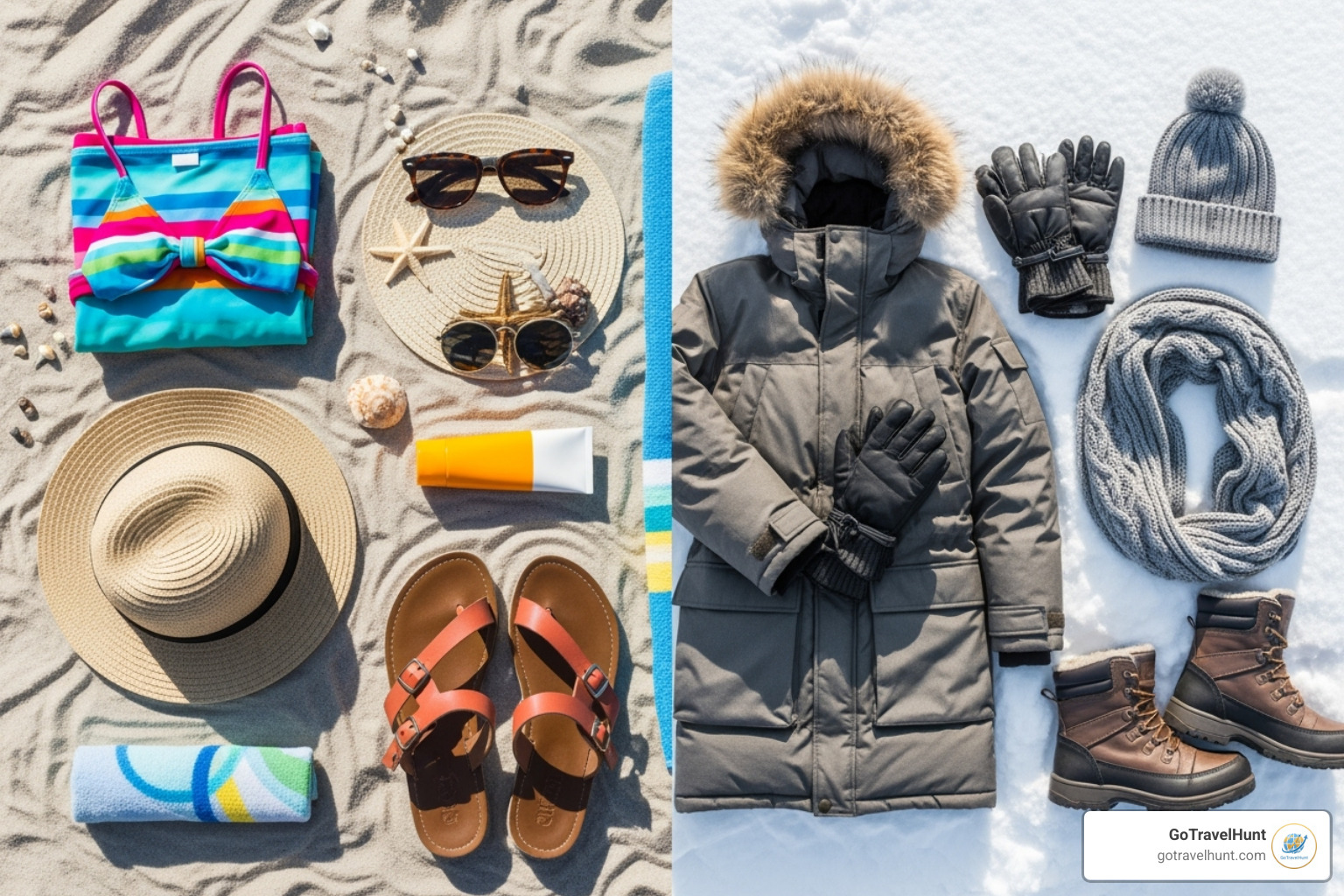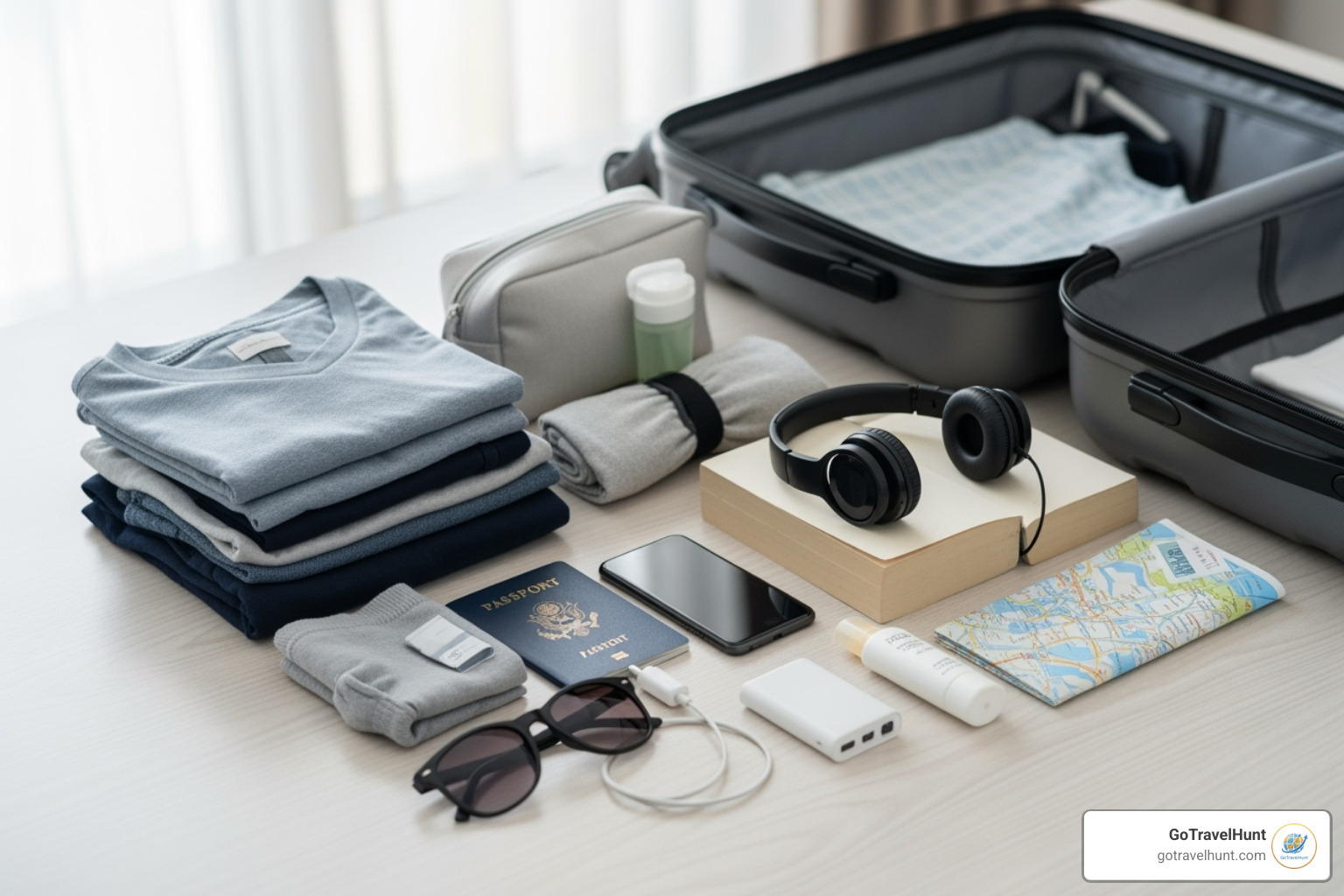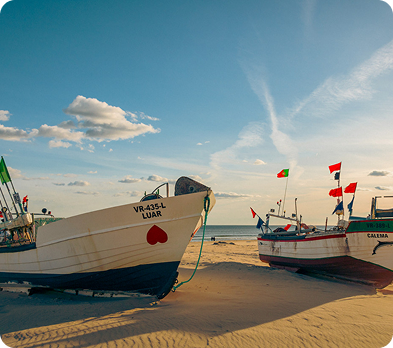Ultimate Packing List: 1 Guide to Flawless Travel
Why a Smart Packing Strategy Matters for Every Traveler
An ultimate packing list is your guide to organizing everything for a trip into key categories: clothing, toiletries, electronics, and documents. A smart list prevents mishaps that range from inconvenient (forgetting a swimsuit) to disastrous (leaving your wallet behind).
With the right preparation, most packing problems are preventable. The secret is realizing you don’t need as much as you think. Many seasoned travelers recommend a simple rule: write down everything you think you’ll need, then cut that list in half. This mindset helps you avoid overpacking, which leads to extra fees, heavy bags, and the stress of hunting for forgotten essentials in an unfamiliar place.
Packing doesn’t have to be stressful. With a solid framework, you can pack efficiently for any trip, from a weekend city break to a month-long adventure. The key is a reliable checklist you can adapt to your destination and activities.
I’m Ramy Saber, founder of GoTravelHunt. Through years of helping travelers plan stress-free trips, I’ve refined what makes an ultimate packing list truly work. This guide will show you how to pack flawlessly, save space, and customize your list for any adventure.

Essential ultimate packing list terms:
- best things to pack for international travel
- last minute packing list
- trip preparation list
The Core Components of Any Packing List
No matter your destination, certain items belong in every suitcase. These are the non-negotiables for your ultimate packing list that keep you comfortable, healthy, and prepared.
Essential Clothing and Footwear
The secret to smart packing is bringing the right clothes, not more clothes. Aim for a versatile wardrobe where a few pieces create multiple outfits. Stick with a neutral color palette (black, navy, gray) and add one or two accent colors.
Layering is key. A lightweight base layer, a mid-weight sweater, and a weatherproof jacket can handle varied conditions. For a 3-5 day trip, pack underwear and socks for each day, one pair of pajamas, and a few casual, dressy, and activewear outfits. For trips over a week, add a few more outfits and a second pair of pajamas. If you have access to laundry, you can pack for 7-10 days and re-wear items, saving significant space.
Build your wardrobe with versatile pieces:
- Basics: underwear, socks, bras, and sleepwear.
- Tops: t-shirts, dress shirts, and casual shirts.
- Bottoms: jeans, pants, shorts, dresses, and skirts.
- Layers: sweaters, sweatshirts, and coats.
- Specialty: swimsuits, cover-ups, suits, and ties.
- Accessories: hats, gloves, and scarves.
Footwear can make or break a trip. Prioritize comfort and versatility. A solid pair of walking shoes is essential. Consider a second pair for different occasions, like leisure shoes, hiking boots, sneakers, snow boots, dress shoes, or sandals. Our guide to versatile travel shoes has more recommendations.

Toiletries and Personal Health
Use travel-size containers for your favorite products to save space and comply with TSA’s 3-1-1 liquid rule for carry-ons. Consider solid alternatives like shampoo bars to bypass liquid restrictions entirely.
Your travel first-aid kit is non-negotiable. Include bandages, first-aid ointment, pain relievers, allergy medication, stomach remedies, tweezers, hand sanitizer, sunscreen, lip balm, and insect repellent.
Pack prescription medications in their original containers and keep them in your carry-on. Bring enough for the entire trip plus a few extra days. Check the TSA guidelines for traveling with medication before you fly.
Daily essentials include: toothbrush, toothpaste, dental floss, soap, deodorant, shampoo, conditioner, hair brush, styling tools, facial cleanser, moisturizer, contact lenses and solution, shaving supplies, makeup, menstrual products, and any vitamins.
Essential Documents and Finances
These items are the gatekeepers of your trip. Check that your passport or ID is valid for at least six months beyond your travel dates. Handle any required visas well in advance.
Keep physical and digital copies of your itinerary, passport, ID, and credit cards. Store digital copies securely in the cloud. Also, keep a list of medications and emergency contact information for your bank.
Carry more than one credit or ATM card and store them separately. Get some local currency before you arrive for small purchases. Also, be sure to get travel insurance; compare policies to find one that covers your needs and keep the policy information easily accessible.
Finally, notify your bank and credit card companies of your travel plans to avoid having your cards frozen for suspicious activity.
Electronics and Entertainment
Your smartphone is your most important tool for navigation and communication; protect it with a durable case. Pack chargers for all your devices.
An external battery or portable charger is a lifesaver on long sightseeing days. For international trips, a universal power adapter is essential, as plug types and voltages vary by country.
Good headphones are invaluable for flights and transit. For reading, a Kindle or e-books save space over physical books. If photography is a priority, bring a dedicated camera with extra memory cards. For easy international data, consider an eSIM to stay connected without swapping physical SIM cards.

Mastering Your Luggage: Smart Packing Strategies
Knowing what to pack is half the battle; how you pack it is where the magic happens. Smart strategies save money on baggage fees and make your journey more comfortable.
Choosing the Right Travel Bag
Your bag is the foundation of your packing strategy. Whenever possible, travel with just a carry-on. You’ll save money, avoid waiting at baggage claim, and eliminate the risk of lost luggage.
- Backpacks vs. Suitcases: A travel backpack like the Osprey Farpoint 40 is great for navigating stairs and uneven streets, keeping your hands free. For trips with less walking, a four-wheel quality carry-on roller glides effortlessly.
- Other Options: Flexible duffel bags can squeeze into tight overhead bins. If you’re carrying a laptop, a dedicated laptop backpack offers protection. For day trips, a lightweight daypack is perfect.
- Hard-shell vs. Soft-shell: Hard-shell luggage protects fragile items, while soft-shell bags offer more flexibility. Choose based on what you’re packing.
Match your bag to your trip. Our Holiday Luggage Checklist and City Break Packing List offer more specific guidance.
Space-Saving Techniques
Make everything fit with these proven techniques:
- Rolling vs. Folding: Roll casual items like t-shirts and jeans to save space and reduce wrinkles. Fold structured items like blazers. Most travelers use a combination of both.
- Packing Cubes: These are game-changers. They compartmentalize and compress clothing, making it easy to find what you need without destroying your neatly packed bag.
- Compression Sacks: These are great for bulky items like winter jackets, saving even more space.
- Fill Dead Space: Stuff socks, underwear, or chargers inside your shoes. Tuck small items into corners. Every inch counts.
- Wear Your Heaviest Items: Wear your bulkiest coat, sweater, and boots on the plane to free up significant room in your bag.
Crafting the Ultimate Packing List for Your Carry-On
Your carry-on should contain everything you can’t live without for a few days, in case your checked bag is delayed or lost.
Always pack these in your carry-on:
- Valuables: Jewelry, cash, credit cards.
- Documents: Passport, ID, boarding passes, and hotel confirmations.
- Medications: All prescription drugs and essential over-the-counter remedies like in-flight medications.
- Electronics: Laptops, phones, cameras, and all chargers.
- A Change of Clothes: At least one complete outfit and underwear.
- Essential Toiletries: Travel-sized basics to get you through a day or two.
- In-Flight Comfort: A travel pillow, eye mask, earplugs, and headphones.
- Health & Hygiene: Disinfecting wipes and hand sanitizer.
- Other Essentials: Snacks, an empty water bottle, gum, glasses, and your house keys.
For more comprehensive recommendations, see our Best Travel Packing List
Tailoring Your Ultimate Packing List for Any Adventure
A truly ultimate packing list is a flexible framework you adapt to your specific journey. What works for a ski trip won’t work for a beach getaway. Once you’ve mastered the core components, customizing your list for different climates and activities becomes intuitive.
Packing for Different Climates
Always check the forecast. Your destination’s climate should be the primary influence on what you pack.
- Hot Weather: Pack lightweight, breathable fabrics. A Swimsuit, a Cover-up, a wide-brimmed Hat, comfortable Sandals, and plenty of Sunscreen are non-negotiable.
- Cold Weather: Layering is essential. Start with a thermal base, add warm Sweaters or Sweatshirts, and top with a quality Coat. Don’t forget Gloves, Scarves, and waterproof Snow Boots.
- Rainy Weather: A compact Umbrella and a waterproof jacket are smart additions for almost any trip.

Customizing for Trip Type
Your planned activities are just as important as the weather.
- Business Travel: Prioritize a professional appearance with wrinkle-resistant Suits, Dress Shirts, Ties, and Dress Shoes.
- Adventure Travel: Pack gear like sturdy Hiking Boots, a reliable daypack, and perhaps a LifeStraw water filter for backcountry treks.
- Beach Vacations: Beyond swimwear, pack Cover-ups, quality Sunglasses, and a waterproof phone case.
- City Exploration: Comfortable walking shoes are your top priority. Also consider a Collapsible Tote for souvenirs and versatile clothing like merino wool layers that work in multiple settings.
Building Your Personal Ultimate Packing List
The best strategy is to create your own customizable template. Start with our core categories, then personalize it. After each trip, review your list: What did you use? What did you not use? What did you wish you had? This simple reflection refines your system over time. Remember the “cut it in half” rule—you truly need less than you think. If you plan to bring home souvenirs, a collapsible tote is a perfect solution.
Download our customizable packing template to get a head start on building your perfect system.
Final Preparations for a Stress-Free Departure
Your bags are packed, but a few final steps will ensure true peace of mind while you’re away.
Pre-Trip Home Checklist
Preparing your home is as important as packing your suitcase. Run through this checklist before you leave:
- Secure your home: Check that all windows and doors are locked. Consider using light timers to make your home look occupied.
- Unplug electronics: Save energy and protect appliances like your TV, coffee maker, and computer from power surges.
- Manage mail: Ask a neighbor to collect your mail or arrange a hold with the postal service to avoid a clear sign that you’re away.
- Arrange care: Confirm arrangements for pets and water your plants.
- Notify banks: Inform your credit card companies of your travel plans to prevent your cards from being frozen.
- Share your itinerary: Give your flight and hotel details to a trusted friend or family member.
- Secure valuables: Store any valuables you’re leaving behind in a safe place.
For a more detailed guide, you can Download the Checklist Here.
Often-Overlooked but Useful Accessories
These small items can significantly improve your travel experience:
- Collapsible water bottle: Saves money and reduces plastic waste. Stay hydrated by filling it up after airport security.
- Travel lock: A TSA-approved lock provides peace of mind for your luggage or a hostel locker.
- Portable laundry kit: Allows you to do quick washes in your hotel sink, so you can pack lighter.
- Headlamp: Invaluable for finding things in the dark without waking others, and it keeps your hands free.
- Multi-use scarf or sarong: Can be used as a blanket, beach cover-up, or an extra layer.
- Disinfecting wipes: Essential for wiping down high-touch surfaces like airplane tray tables and hotel remotes.
- Binoculars: A compact pair is great for birdwatching, viewing architecture, or spotting wildlife.
- Ziplock bags: Infinitely useful for organizing, waterproofing, and storing snacks or wet items.

Frequently Asked Questions about Packing
How far in advance should I start packing for a trip?
Create your ultimate packing list 1-2 weeks before your trip. This gives you time to check the weather and buy any missing items without rushing. Start physically packing 2-3 days before you leave. This avoids last-minute panic and helps ensure you don’t forget anything important.
What’s the best way to pack shoes?
Shoes are bulky and can be dirty, but they’re manageable. Place them heel-to-toe along the sides of your suitcase. Always use shoe bags to keep your clothes clean. To save space, stuff socks, underwear, or small chargers inside your shoes; this also helps them keep their shape. On travel days, wear your bulkiest pair to free up luggage space.
How can I avoid overpacking?
Overpacking is the most common travel mistake. Here’s how to avoid it:
- Plan your outfits: Visualize what you’ll wear each day to pack with purpose and avoid bringing “just in case” items.
- Choose versatile clothing: Stick to a mix-and-match neutral color palette to create more outfits with fewer pieces.
- Do laundry: On longer trips, plan to do laundry. A portable laundry kit lets you pack for 7-10 days and re-wear clothes.
- Apply the \”cut it in half\” rule: Lay out everything you think you need, then challenge yourself to eliminate half of it. You’ll be surprised how little you actually need.
- Use a smaller bag: This forces you to make smarter, more essential choices from the start.
Conclusion
You’ve just open uped the secret to stress-free travel: a thoughtful, well-crafted ultimate packing list. It’s more than a checklist—it’s your ticket to smoother journeys, lighter luggage, and the freedom to focus on your adventure.
When you pack smart, you’re not paying extra fees or hauling unnecessary weight. You arrive confident, organized, and ready to explore. The beauty of this system is its flexibility. Start with the core essentials, then customize your list for each unique trip.
Remember the key strategies: the “cut it in half” rule, the power of versatile clothing, the magic of packing cubes, and the wisdom of keeping essentials in your carry-on. These lessons will transform how you prepare for travel.
Your next adventure is waiting. At GoTravelHunt, we believe travel should be exciting, not stressful. We’re here to help you find incredible destinations, find unbeatable deals, and plan your journey with confidence. Your ultimate packing list is just the beginning.
Start planning your next trip now and turn your travel dreams into reality.











